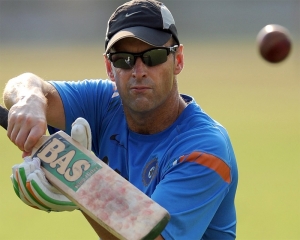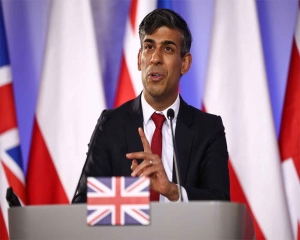One of the most intriguing features of the Bhojeshwara temple is that it was never completed, and no one knows why
On any trip to Bhopal, one can make a couple of detours and visit two famous world heritage sites. Bhimbhetka, the site of ancient rock cut arts, made in caves, some of them as ancient as fifty thousand years old. Or Sanchi, to see the most impressive Buddhist stupa of Ashokan times. But I had never heard of the Bhojeshwara Temple that one can visit on a day trip from Bhopal. It is an unheard-of gem, that makes travel that much more interesting.
The huge rock temple of Bhojeshwara, which was never completed, but nevertheless is still being used as a place of worship, stands on a raised hill-like structure. The temple overlooks a narrow, blue ribbon of a river that flows below the hillock. I was told that it was the same river ‘Betwa’ that I had seen so many times, in its pristine elegance, near Jhansi in Uttar Pradesh. I had not expected this and I looked again at the river, so very different here. It was as if suddenly one comes across a stranger only to realize that he or she is indeed a friend of a long past.
It is believed that the great Raja Bhoj, who ruled these lands of Malwa in the 11th-12th centuries, had started building the temple, hence the name. His original capital was the nearby town of Dhar but perhaps he was planning to build a new capital city, Bhojpur, on this land, on the banks of river Betwa. Perhaps, that is why a massive dam was built over the river, the remnants of which one can see even today. It is believed that the dam resulted in the creation of huge reservoir that extended all the way to horizon.
One of the most interesting features of the site of Bhojpur are the brilliantly and neatly inscribed plans of the nearby buildings, some built but most never implemented upon, that one can still find on the rock floors around the temple. It is as if the town planners and architects were using the rock surfaces as a drawing board and then would have made the buildings as per the plans. Those, nearly a thousand years old building plans still exist, despite years of sun, rain and storms, for anyone to see and marvel at, a clear and visible proof of the heights of science, engineering and architecture that our ancestors in central India had reached in those times.
But if one needs any further proof, one only has to turn around and look up at the huge and magnificent, albeit incomplete temple of Bhojeshwara. For one, it is huge and in terms in terms of sheer dimensions, I don’t remember to have seen anything like this in entire north India. The dimensions of the richly carved gateway, the intricately carved gargoyles, the false pavilions on the side walls, the cavernous interiors with the largest Shivlinga inside surrounded with wide walkways, the sculptures of various gods and goddesses on the inner walls, all of them fill up a curious visitor with awe. The sheer size, beauty, architecture, history and myths associated with it and the continuous living tradition around it, all of them flood one’s senses and one can just about stand and absorb the moment.
One of the most intriguing features of the Bhojeshwara temple is that it was never completed and therefore the temple today doesnot have a ‘Shikhar’ and there is a hole in its roof, like an oculus, through which the sunlight filters in and the rays of the sun fall on the Shivlinga and illuminates the interior. A few years ago, Archeological Survey of India placed a transparent fiber top to cover this hole to prevent the rainwater leaking inside and damaging the structure. The day I visited, a priest was performing puja on the shivinga and scores of devotees, mostly from nearby areas, had come to offer their worship. And yet amidst all the hustle and bustle of the devotees at this living temple, if one looks carefully around, one can discern a construction project abandoned midway. Apart from the obviously incomplete roof, one can see the stone ramp on the outside that must have been used to carry the construction material to the roof and would have been demolished once the temple was complete. One can see the various ancient stone pieces lying around that would have been used in the later stages of construction. Interestingly, some of the stones show markings, most probably signature markings of the artisans who would have carved the piece. Perhaps that was the way to account for their remuneration.
The fact that the medieval Bhojeshewara temple was left incomplete, otherwise a rather unfortunate event, does provide us today with a rare glimpse of the methods, stages and efforts that went into such a massive temple construction project in those days.
As one comes out of the dark sanctum and into the daylight and stands in front of the temple and looks beyond at the horizon, where the green forests merge into the blue skies, and feels the footsteps of devotees all around one, devotees whose ancestors would have worshipped at the same place and would have walked over the same steps, for hundreds of years and generations, one does wonder what would have made Raja Bhoj to abandon his cherished project. He was no ordinary king. His valour, his learning, his writings and his wisdom as well as the legends associated with him survive to this day and even the modern airport of Bhopal is named after him. To the best of my knowledge, Raja Bhoj had a long and prosperous reign. His kingdom was peaceful and prosperous till the end. But then what was the reason that would have made such a mighty king to abandon his most cherished project. Perhaps it was some natural event or some bad omen, perhaps a fiscal compulsion or a looming danger of attack from the west, or just successors not willing to take forward his project post his death. One can only speculate.
As I sat quietly on the rocks strewn around the millennia old Bhojeshwara temple that afternoon, wondering about those long forgotten years of Raja Bhoj and his domains, suddenly I felt the present merge with the past, as it so often happens with me, and the abandoned temple and the site of Bhojpur spread all around me, reminded me of the incessant, inevitable, relentless and inescapable march of time in which we all, the mighty king and the common devotee, are all equal, just tiny specks of dust in the sands of time.
(The writer is an IAS officer, presently Additional Secretary, Ministry of Culture. The views expressed are personal.)


























